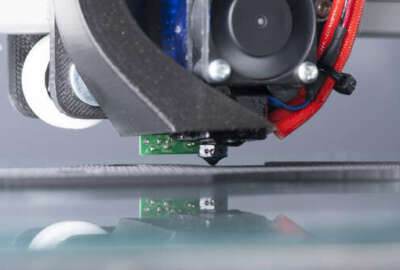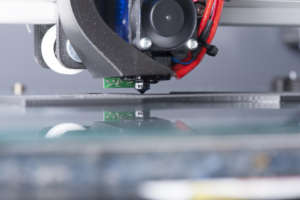

Marines in need of outdated parts now have a 3D printing help desk to get them what they need.
Best listening experience is on Chrome, Firefox or Safari. Subscribe to Federal Drive’s daily audio interviews on Apple Podcasts or PodcastOne.
If you’re missing a part, the Marine Corps Advanced Manufacturing Operations Cell probably has what you need.
The office is now offering 24/7 support for anyone in the Marine Corps to get hard-to-find parts to repair equipment, but there is an added benefit — the office’s motto is “if we can’t find it, we’ll make it.” AMOC uses 3D printing technology to ensure even the most obscure of spare parts find their way into Marines’ hands.
“We came to find it’s not just 3D printing that’s the revolution,” Capt. Matthew Friedell, project officer at AMOC told Federal News Network. “It’s letting Marines know the technology and support infrastructure exists to help them find any part they need. If they can’t find it and we can’t find it, then we can actually make it for them. We were just doing additive manufacturing, dabbling in it, and then discovered that there is this untapped capability that Marines don’t know about. They can call my office or email my office.”

Friedell said he wants to be the easy button for the Marine Corps. The help desk can direct a Marine to the department they need to talk to in order to find the part he or she needs or AMOC can start the data collecting to make the part.
AMOC solves an increasingly frustrating issue for not just the Marines, but for much of the military. As the military’s weapons systems age, it’s becoming harder for mechanics to get their hands on outdated and discontinued parts to fit them.
That’s where 3D technology can be of serious service to the Marine Corps.
“We’re having a lot of problems in our system,” Friedell said. “There’s parts and pieces on vehicles that haven’t been made since the 1970s and 1980s, and it’s very hard to replace those parts. The vendor is either out of business or we can’t find the data on it, so we have to start making these by ones and twos.”
AMOC’s engineering team can 3D scan parts or use calipers to figure out the dimensions of the part, and then put that into a 3D computer design tool. The team will cut up the part to find out the types of metal used to build it and then create a replica.
“Our first 3D systems were plastic because those were the only systems we had access to,” Friedell said. “Three years ago, metal printers weren’t as prevalent as they are today. The first products were low-hanging fruit, but very advantageous to Marines who don’t have them.”
One of the early products the office provided was a radio bracket that held radios in place on Humvees, which frequently broke.
“Without it the radio rattles around and can’t keep in good contact with the electronics it needs to keep in contact with, or Marines just end up holding it,” Friedell said.
The part was not orderable, but the office was able to 3D print it.
From there the Marines began making snowshoe clips and sled brackets. Then the Marines started asking what they could do with metal. Today, the office can make pretty much whatever Marines request, including small drones.
“Really anything in the inventory in terms of parts and pieces can be 3D printed, but the question becomes should it be 3D printed,” Friedell said. “Usually when you 3D print something out of metal it’s very expensive.”
Traditional manufacturing processes have been designed around very high quantities. Making things en masse brings down the cost of tooling and set up. Friedell also said that additive manufacturing, on the whole, is per expensive per part than traditional manufacturing.
“But if we only need five of them, and we don’t have to incur the entire cost of tooling and set up; that’s where additive manufacturing really starts to shine,” he said.
There’s always licensing to take into account, as well. The rights to some products are still owned by companies, even if they are discontinued.
Friedell said he envisions something like an iTunes model in the future, where the military can buy the rights to 3D print a part a certain amount of times. That way a company can keep its intellectual property and the military can keep its systems running.
Copyright © 2025 Federal News Network. All rights reserved. This website is not intended for users located within the European Economic Area.
Scott Maucione is a defense reporter for Federal News Network and reports on human capital, workforce and the Defense Department at-large.
Follow @smaucioneWFED
